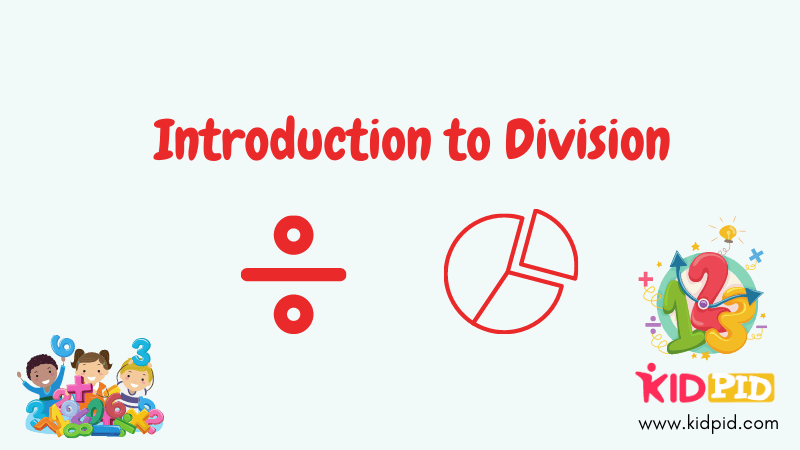Introduction to Division

Contents
What Is A Division?
A division basically is to divide any number into the required given equal parts. A division is generally the opposite of multiplication.
Division Example :
Let us suppose that you need to distribute 10 toffees to 5 persons equally, in this case, to know how much toffees will each person get, you need to divide the number of toffees i.e. (10) by a number of persons i.e. (5), which will give you 2, so it means that 2 toffees will be given to 5 persons each so as to distribute 10 toffees.
10 / 5 = 2
Why Division Is Opposite To Multiplication?
12 x 5 = 60, and to its contrary its division will be as follows :
60 / 5 = 12, which means that when 60 will be divided between 5 persons then each will get 12.
This can also be written as (12 + 12 + 12 + 12 + 12 = 60).
Signs For Division
Generally, there are many signs for division, but mostly only one sign is used to indicate division by everyone i.e ( ), but in many cases, we also see other signs, such as backslash ( / ), and many even write it one below the other number, also called as fraction i.e ( 60 DIVIDED BY 5 )*.
Names Allotted To Each Part Of The Division
In any question regarding division, there are certain names allotted, those are DIVIDEND, DIVISION, and the QUOTIENT.
Dividend / Divisor = Quotient
DIVIDEND: In the process of division, DIVIDEND is the number which is being divided.
DIVISOR: The number by which DIVIDEND is being divided is called DIVISOR.
QUOTIENT: A QUOTIENT is a result for which the whole process of division is being done.
FOR EXAMPLE :
8 / 2 = 4
In the above example,
8 = DIVIDEND
2 = DIVISOR
4 = QUOTIENT
Special Cases
There are some special cases while division :
1.) DIVIDING BY 1: When dividing any no by 1 the answer is always the same number as it is.
FOR EXAMPLE :
5 / 1 = 5
58 / 1 = 58
2.) DIVIDING BY 0: When dividing with 0 the answer is undefined, which means that no number can be divided by 0.
3.) WHEN DIVIDEND IS EQUAL TO DIVISOR: This is another special case in which the answer is always 1
FOR EXAMPLE :
5 / 5 = 1
32 / 32 = 1
Introduction To Remainders
A remainder is another term after dividend, divisor and quotient.
When calculating any division question if any dividend is not divided by divisor then in that case, at last, a number is left which is known as remainder.
For example:
If we try to divide 20 / 3 then, in this case, the dividend 20 cannot be divided by the divisor 3 as a whole, so at last, a number is left i.e. 2 which is called the remainder. when you divide 20 by 3, you need to choose the small but closest number to 20, in this case, it is 18, and when subtracted by 20 it gives 2 which is the remainder and answer as well.
Some More Examples
15 / 2 = 7 and remainder is 1.
25 / 7 = 3 and remainder is 4.
18 / 7 = 2 and remainder is 4 .
How Division Is Different From Multiplication?
Division and multiplication are both different from each other or are opposite to each other. But multiplication is always used while doing division, so basically, they both are an integral part of each other.
For Example:
5 x 4 = 20, Here in this example when 5 is multiplied by 4 the answer is 20 which means that 20 always divided by 5 and 4 as well, when 20 is divided by 5 it will give you the other number i.e 4 and when 20 is divided by 4 it will give you 5. Which is now quite clear that for doing division one must learn multiplication.
So it can be said that both multiplication and division are brother and sister to each other.






Responses